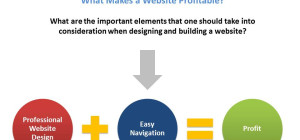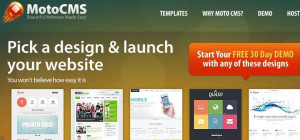 A lot of time and money is spent in optimizing e-Commerce websites in order to attract customers. Once this is achieved, the next stage is to convert a visitor into a buyer and it all depends on how the product page works. The smallest differences in designing e-Commerce product pages can have a huge impact on the website's overall profitability and conversion rate. The product page of an e-Commerce website can be equated to a store associate. It must perform the same task that a live salesperson would do, that is to pique the interest of the visitor in a product.
A lot of time and money is spent in optimizing e-Commerce websites in order to attract customers. Once this is achieved, the next stage is to convert a visitor into a buyer and it all depends on how the product page works. The smallest differences in designing e-Commerce product pages can have a huge impact on the website's overall profitability and conversion rate. The product page of an e-Commerce website can be equated to a store associate. It must perform the same task that a live salesperson would do, that is to pique the interest of the visitor in a product.
The objective of an effective product page must be to focus a visitor's attention, reduce distractions, satisfy different motivations, build confidence by answering questions, appeal to different buying stages and render the preferred action simple and obvious. It is a challenge for web designers to compress so much information about a product into one single page and present it in a way that is convincing and easy to understand.
Here are the best practices for e-Commerce product pages:
Use Impeccable Product Images and Videos:
When it comes to product pages on e-Commerce websites, the pictures of the products play an important role in grabbing the customer's attention and also impacts their decision making process. The product images must be zoom-able, enticing and must be placed at the top of the page and the quality of the image must be jaw-dropping. The image and video quality influences the way customers feel about the products and if they will share it on social media platforms. This can improve customer engagement, word-of-mouth branding and conversion rate.A photo can communicate the essence of the product more effectively and therefore as many compelling images and videos as possible must be used and small images must be avoided completely. An online shopper cannot touch or feel the product and therefore, a lot of visual information must be supplied which can accurately convey the size, color, shape, style and selection so that the purchasing anxiety of the customer can be reduced.
Prominent Call to Action:
The call-to-action (CTA) button is one of the easiest aspects of the product page to experiment with. It can have different styles of presentation which can reflect the aesthetics of the e-Commerce website. It is extremely important that the CTAs are compelling, clear and are in contrast with other elements on the page. The CTA button could say anything from ‘add to cart', ‘buy now' to ‘checkout' but most importantly they must be easy to recognize and must compel the customer to act. A Chicago-based online retailer, RIPT Apparel, increased their sales by 6.3% by trying different variations in CTA buttons. The ideal CTA must have the following features:
- CTAs must be brief and action oriented
- Easy to locate and visually contrasting
Easily comprehensibleCTAs can guide customers through the entire purchase process without affecting their shopping experience. Needless to say, a CTA that is well crafted can be a real game changer for e-Commerce websites.
Shortage Compels Action:
It has been scientifically proved that when it comes to loss aversion, humans can be quite irrational. Because people hate missing out on things, scarcity and urgency can be a very powerful tool when used in e-Commerce product pages. E-commerce websites must not give the customers time to mull over a product to purchase and a sense of urgency must be created so that the customers can act soon. The scarcity or urgency tactic that can be used is by highlighting that it is the last day of offer for a particular product, last few items in stock or last few hours of free shipping. There are two kinds of urgency/scarcity, real and implied.
- Real emergency is when there is only a limited stock of the product left or an offer on a particular product will expire in a limited period of time.
- Implied urgency is when the product is tagged with a phrase such as ‘hurry before stocks run out' to induce a sense of urgency in the customers even though there is no inherent urgency.
Include Customer Reviews:
A report by BazaarVoice Inc, a customer ratings and reviews firm, reveals that the product page visitors who go through customer reviews have a conversion rate 58% higher than the customers who don't and for the e-Commerce website customer reviews can increase revenue per visit by 62%. Customer reviews must be flaunted as it plays an important role in influencing the product page visitor's purchasing decision. But customer reviews must be placed lower down the page so that the visitors can review them once they have thoroughly gone through the product descriptions. Customer reviews can also help product pages rank high in Google search results as pages which are frequently updated with unique and fresh content are suitable rewarded by Google.
Faster Page Load Speed:
Many e-Commerce websites use high definition images, videos and live chat feature on their product pages which are all good but it overwhelms the product page and drastically affects page load time. According to KissMetrics, close to 47% of customers expect the web pages to take 2 seconds or less to load and 40% of the consumers will abandon a website which takes more than 3 seconds to load. It is all about saving the customer's time and rendering the purchase process as easy and fast as possible. Apart from images and videos, other aspects which can affect page load time include many HTTP requests, huge number of DNS lookups and absence of GZIP compression or PHP accelerators.
Improve Scan-ability with Negative Space:
Product pages must be designed in such a way that the customers must find it easy to find the information that they need. Visitors go through a product page to determine if they can find anything that interests them. They want to find the information as soon as possible. Visitor's eyes are guided by the white space that surrounds the page elements and helps them to find what they are looking for with relative ease. The white space around an action button can be considered as a way to make it look prominent.But too much white space is not acceptable as it can make it difficult to differentiate good content from bad content. Therefore, the key to a great product page design is to maintain balance between the amount of white space and the amount of content. On the product page, product name, product description which can include size, color and price must be adequately spaced so that the information that is most important can be easily determined.
Use Badges for Trust:
The biggest challenge that e-Commerce websites face is to build trust among the visitors and make them feel confident about making a purchase. One of the important criteria that can increase the likelihood of desired action from a visitor is to reduce their anxiety levels. Once the visitor has made up their mind to purchase a product, the next crucial part is to reassure them so that they can enter the all-important checkout stage. This can be achieved on the product page by providing the visitors with social proof along with trust signals that can include customer support phone numbers, security badges and customer reviews. To showcase the secure badge in the URL bar of the browser, a SSL certificate can be used. For example, a UK based online watch retailer Express Watches replaced an image that said ‘Never Beaten on Price' to ‘Seiko Authorized Dealer Site' and saw a 107% increase in sales.
Product pages have the ability to make or break an e-Commerce website. The product pages must be designed in such a way that visitors must get converted to customers with relative ease. A product page will require constant analysis of its performance and it must be optimized to provide the best possible experience to the visitor. Improvements must be made frequently so that it is in pace with new technology. The effect of product pages on conversion rates can be debatable but it is the final chance for e-Commerce websites to make the visitor buy.







